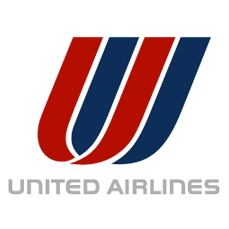 United and Continental Airlines shareholders approved the merger of their companies on Friday, forming the world’s largest airline.
United and Continental Airlines shareholders approved the merger of their companies on Friday, forming the world’s largest airline.
For both companies the vote was almost unanimous with 98 percent of shareholders approving the deal. Continental brass announced the results of the vote during a shareholder’s meeting Friday, while United shareholders approved the merger in a meeting near Chicago.
The vote was the last step before papers finalizing the merger are signed on the first day of October, creating a new United Airlines.
The vote also clears the way for a $3 billion stock swap by shareholders of United parent UAL Corp.
Today’s vote come after a four-year courtship between the airlines filled with false starts and flirtation by United with Continental rival US Airways. In addition to agreeing upon the terms of the merger, the airlines had to convince government regulators that creating the world’s first mega-airline would not put the squeeze on competition.
The last four years of negotiation might have been the easy part, however. Once the merger is signed the companies must work together to combine the airlines, an effort that will include: working with unions, combining reservation systems, and rebranding the company.
 The task will be complicated by United and Continental’s vastly different operating styles and corporate cultures.
The task will be complicated by United and Continental’s vastly different operating styles and corporate cultures.
Passengers will probably not feel the changes for around half a year. But once the logistics of the merger are concluded in around 18 months, the new airline will retain the United name and be based in United’s hometown of Chicago. The airline will also retain Continental’s logo and be run by Continental’s CEO Jeff Smisek.
It might take five years, however, before the merger can be characterized as a success or a failure for the two companies. The goal for United and Continental is to emerge from the process as a large, but well-run company instead of letting the combination water down both brands.
The company has a lot to gain from being successful. It is estimated that the new United will generate around $30 billion in revenue a year, and will carry an estimated 144 million passengers to 370 destinations in 59 nations.
Analysts say that a large part of the company’s success would depend upon applying Continental’s customer-friendly culture to the embattled United, which has been dominated for years by conflict between labor and management, especially Chairman and CEO Glenn Tilton.
 Continental, meanwhile, turned around labor relations in the last two decades and now has one of the best labor and management relationships in the airline industry. Zagat Survey and J.D. Power and Associates also consistently rate Continental as one of the top 10 airlines for customer service according to their customer surveys.
Continental, meanwhile, turned around labor relations in the last two decades and now has one of the best labor and management relationships in the airline industry. Zagat Survey and J.D. Power and Associates also consistently rate Continental as one of the top 10 airlines for customer service according to their customer surveys.
But just because Continental has a superior customer track record doesn’t mean the merged airline will adopt Continental’s culture. It’s very possible that services will be lost in the combination of the airlines and that some of the quality maybe reduced. The merger might also provide new services that might have previously been unavailable.
Most importantly, airfares will probably stay the same, despite the merger. United and Continental compete directly on only 14 domestic routes and do not compete on any international routes.
The lack of competition between United and Continental was a large part of the reason why the government approved the merger.
By Adriana Padilla for PeterGreenberg.com.
Related Links: Houston Chronicle, USA Today
Related Links on PeterGreenberg.com:
- Travel Reporters Analyze Continental-United Merger’s Effects
- Effects of the Continental-United Airlines Merger on Frequent Fliers
- Continental-United Airlines Merger on CBS News
- United-US Airways Merger Talks Underway: Continental Totally Jealous
- United Pilot Says Goodbye to the 747
- More Mergers Likely as Continental Reclaims Golden Share From Northwest
- Air Travel News – Airlines & Airports section












